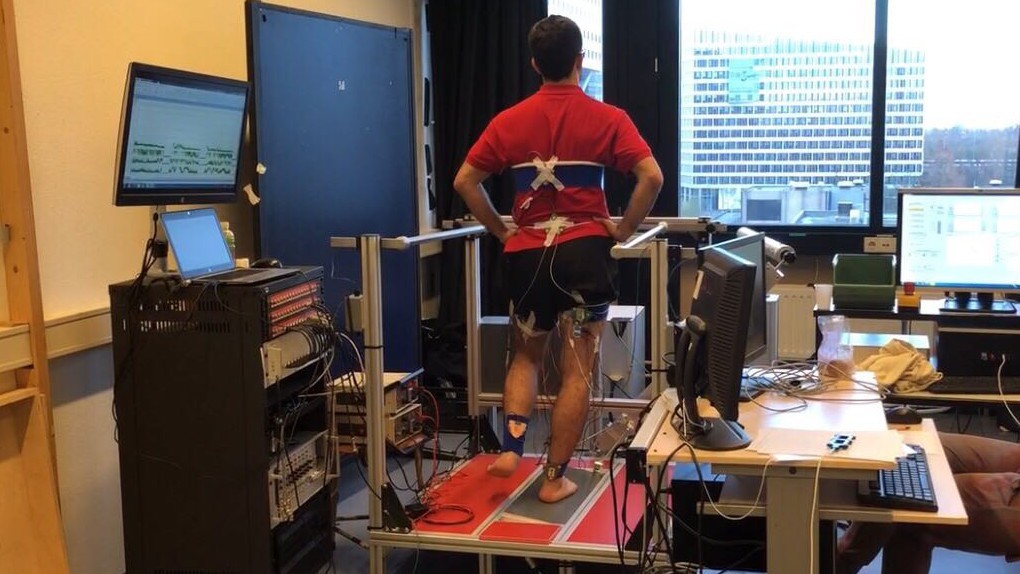Balance testing
Project Parameters
Research Partners
Related Research Themes & Projects

Unravelling the etiology of muscle injuries
The first aim of the research project is to characterize the activity of the hamstring muscles biomechanically and neurophsyiologically, during high speed running activities and injury prevention exercises. The second aim is to study muscle characteristics in athletes before and after a prevention program.

Identification of trunk postural control mechanisms
In this project, we have developed methods to identify trunk muscle control based on mechanical perturbations of the trunk and measurements of resulting kinematics and muscle activity and a neurophysiological model of trunk control to obtain a better understanding of how trunk posture is maintained in healthy subjects and how this control is impaired in patients with low-back pain and movement disorders

Learning to balance
In this project, we will study short- and long-term training in young and older adults, to determine the psychological (fear of falling), neurophysiological (reflex gains, muscle synergies) and biomechanical (motor strategies) correlates of improved balance performance

Breaking the high load – bad coordination in overhead sports injuries
The aim of this project is to develop a system to provide feedback on loading of the arm and key coordination parameters in sports activities such as a tennis stroke, which provides information on the (accumulated) load a, based on power flow models and ligament loading estimates.